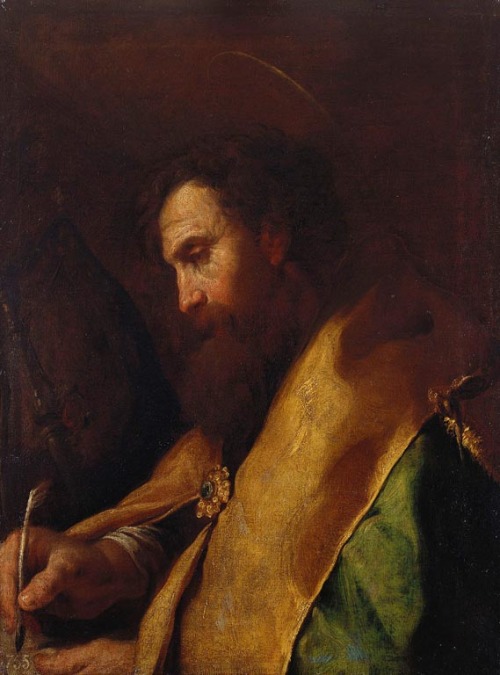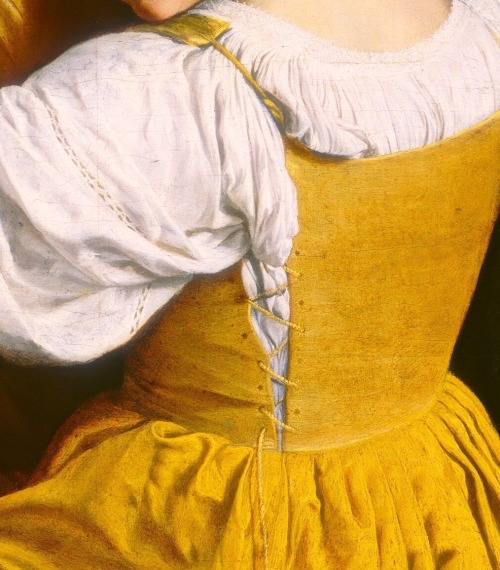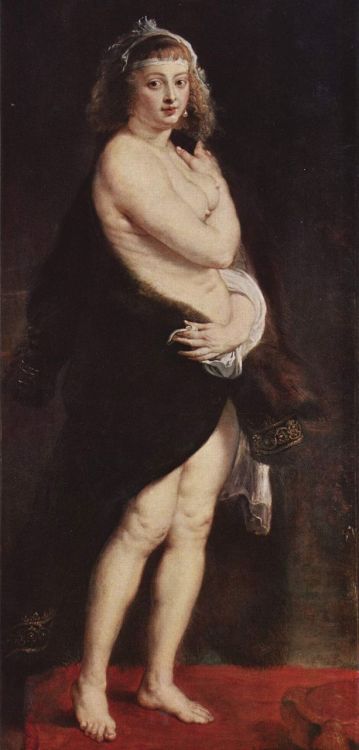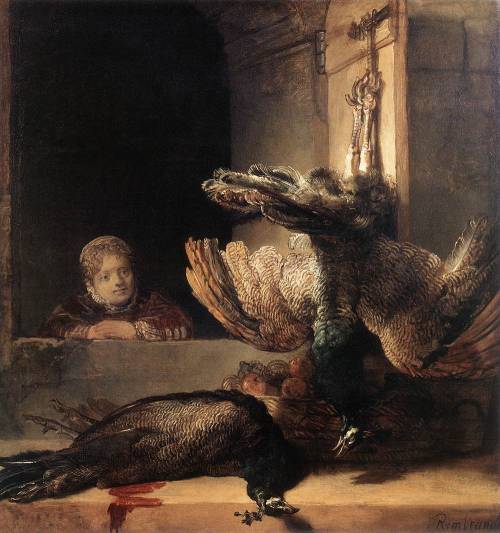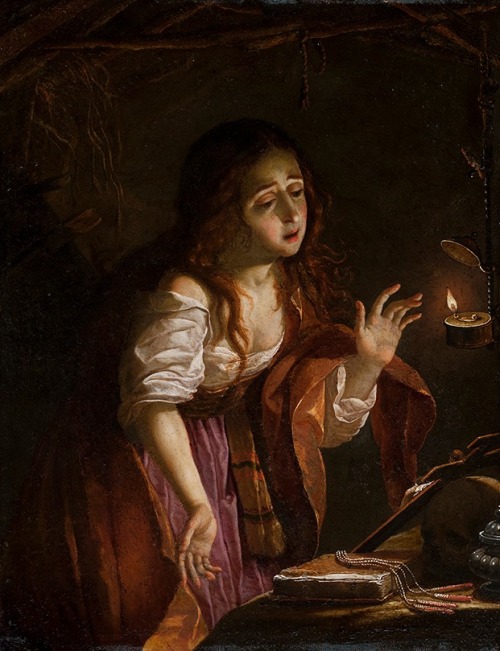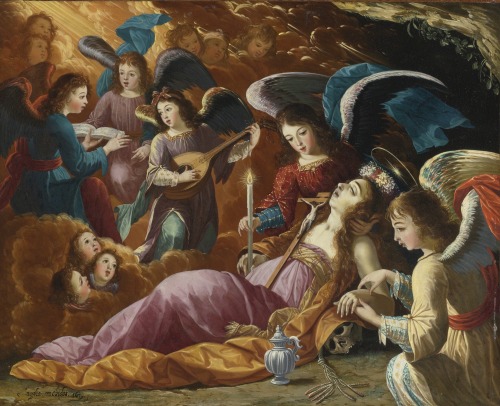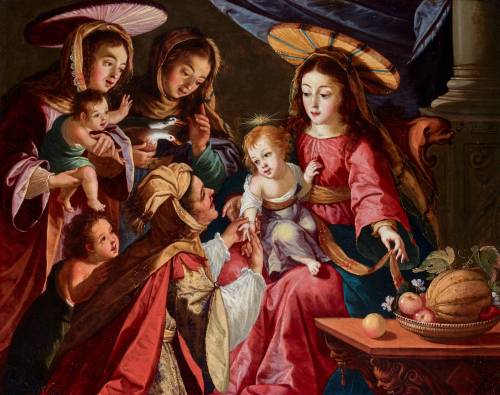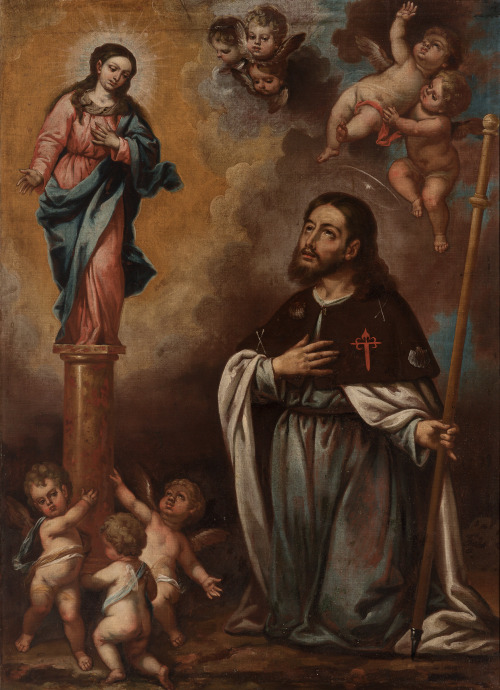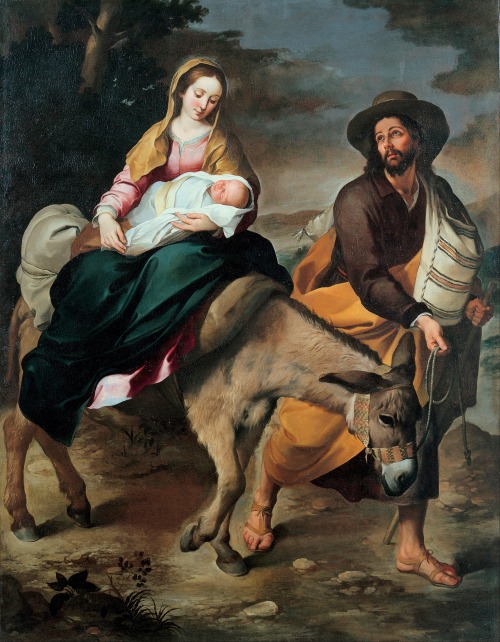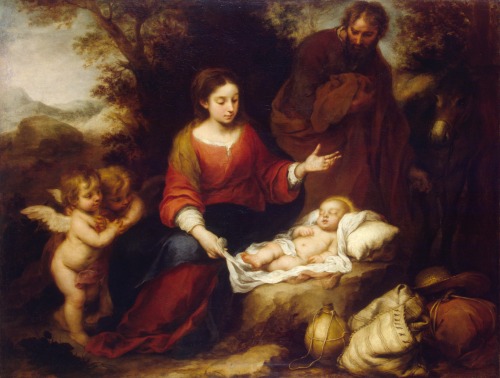#baroque painting
Peter Paul Rubens (1577-1640)
A Flemish Baroque painter, who is best known for his epic history paintings of myth and patriotic glory, such as his famed ceiling paintings at Inigo Jone’s unique Banquet House, which unashamedly reinforces the devine right of Kings. In my mind however when I think of Rubens I think of his delicately vivid palette and fleshy sensuous depiction of the female body.
This style is particularly indicative of his later works which feel more liberated, less academic and restrained. Perhaps these physical developments were encouraged by his second marriage to Hélène Fourment four years after the death of his first wife, when Rubens was well into his 50s and she was a tender sixteen years of age. As made clear from this intimate revealing portrait of Fourment, he took great inspiration from her curvaceous form, and had elevated her to the status of muse.
Post link

Detail from “Saint Jerome Meditating”, 1605, Caravaggio.
Josefa de Óbidos (Josefa de Ayala Figueira)
The Penitent Magdalene Comforted by Angels
Oil on copper [Signed and dated: “(Jo)sepha em obidos 167(9)”]
Musée du Louvre, Paris (RF2016-13)
“This painting on copper is a relatively late work by the artist and one which beautifully expresses her piety and the deep sense of mysticism that pervades much of her oeuvre. The Magdalene is depicted at the very moment of her conversion. Still attired in rich satin robes, she has swooned in ecstasy before a vision of heaven in the form of musical angels set against swirling clouds, while two kneeling angels tenderly support her. In the foreground can be seen her usual attributes: the ointment jar, a skull and a scourge, to which the artist has carefully added the detail of dried blood. It seems certain that Josefa knew works by Francisco de Zurbarán (indeed several of his panel paintings were included in inventories of her father’s, uncle’s and sister’s properties) and his influence can be seen here in the luminous touches of white and cream, and in the facial types and textiles.” (source)
Post link
Josefa de Óbidos (Josefa de Ayala Figueira)
The Holy Family with the Infant Saint John the Baptist, Saint Elizabeth and Angels
Oil on copper (Signed and dated: “Josepha: em Obidos. / 1678″)
Museu da Misericórdia do Porto, Portugal
“This painting on copper dates from the artist’s maturity. With exquisite detail, and particular attention given to the depiction of the various textiles worn by the figures, Josefa depicts the Holy Family with Saint Elizabeth and the Infant Saint John the Baptist. These figures, all grouped together at right, are set against a wonderfully theatrical vision of angels and cherubim descending from heaven. Copper was Josefa’s preferred support in the first decades of her career, between 1647 and 1661, after which she painted mainly on canvas and on a larger format. The present work [is] exceptional in this regard, demonstrating her mature technique, but on a smaller scale and with a miniaturist sense of detail.” (source)
Post link
Josefa de Óbidos (Josefa de Ayala Figueira)
Reading the Fate of the Christ Child
akaThe Child Jesus and the Fortune-Teller
Oil on copper (Signed and dated: Josepha..1667)
The Detroit Institute of Arts (2020.15)
“Josefa de Óbidos successfully infused this work with her enormous talent and inspiration, choosing a subject that was extremely unusual for the time, dressing the Virgin Mary in a gypsy hat, while a woman, also a gypsy, reads the Christ Child’s palm. The scene is overflowing with unrivalled tenderness and warmth.” (via Jaime Eguiguren Art & Antiques · read more + catalogue)
Post link
Josefa de Óbidos (Josefa de Ayala Figueira)
The Holy Family (1664)
Destroyed by fire on December 24, 2013 at the Convento de Santa Cruz do Buçaco (Luso, Portugal)
Post link
Josefa de Óbidos (Josefa de Ayala Figueira)
The Infant Christ as a Pilgrim (ca. 1670s)
Private collection (via Lamas Bolaño)
Post link
Circle of Alonso Cano
The Apparition of the Virgin to Saint James the Greater
Private collection (via Setdart)
Saint James was one of the Twelve Apostles of Jesus according to the New Testament, and is the patron saint of Spain. According to ancient local tradition, on 2 January AD 40, the Virgin Mary appeared to James on the bank of the Ebro River at Caesaraugusta, while he was preaching the Gospel in Hispania. She appeared upon a pillar, Nuestra Señora del Pilar, and that pillar is conserved and venerated within the present Basilica of Our Lady of the Pillar, in Zaragoza, Spain.
Post link
Valencian School · Unknown artist
Saint James the Greater as a Pilgrim (early 17th century)
Private collection
Post link
Bartolomé Esteban Murillo
The Flight into Egypt (ca. 1645-50)
Musei di Strada Nuova, Genoa (PB241)
Post link
Bartolomé Esteban Murillo
Rest on the Flight into Egypt (ca. 1665)
The State Hermitage Museum, Saint Petersburg (ГЭ-340)
Post link

Oily tempera on canvas by Roberto Ferri, 2020




